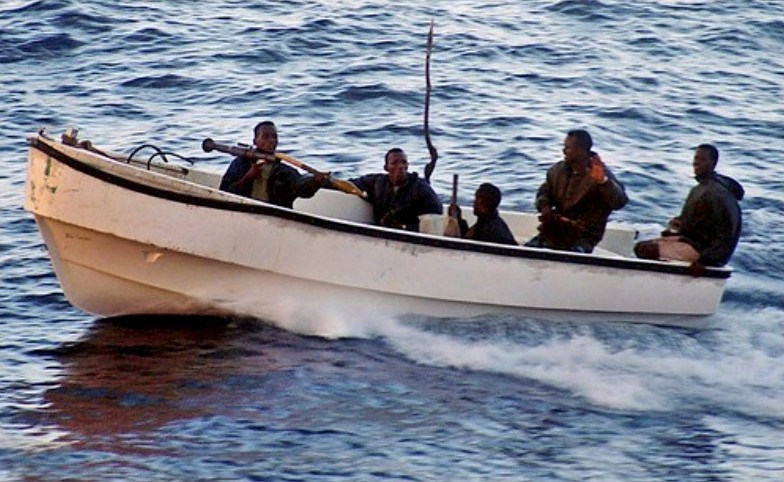When confronting the crisis of Somali piracy, the preferred strategy of the international community has been to deploy naval vessels to protect vulnerable ships and deter and disrupt pirate attacks. The refrain that ‘the solution to piracy lies onshore’ is oft heard, but counter-piracy actors, including the US, the EU, and NATO, have been slow to deepen their engagement with regional authorities and hesitant to expand the military scope of their operations.
A significant shift in strategy was thus seen on March 23, 2012, when the Council of the European Union agreed to extend the area of operations for the EU’s counter-piracy mission, Operation Atalanta, to “include Somali coastal territory as well as its territorial and internal waters.” While a more inland focused policy is a welcome development, the EU’s proposed militarization of its counter-piracy strategy risks increasing civilian casualties and local resentment and will have to contend with the unintended consequences of mission creep. This new strategy also comes at the expense of an alternative onshore policy: increased international support for maritime security capacity building programs in Somalia’s pirate-prone areas and the wider region.
Charting the Wrong Course
Military experts informing the EU’s decision have argued that attacks should be launched by helicopter gunships in order to accurately hit targets while avoiding civilian casualties. While there was no official pronouncement, Germany’s Der Spiegel reports that a strike limit of two kilometers inland was eventually reached after prolonged debate within the Council. The use of both missile strikes and the deployment of ground troops were prohibited by the Council’s decision.
Though Spanish Foreign Minister Jose Manuel Garcia-Margallo assured skeptics that “much care” will be taken to avoid civilian casualties, history teaches that even the best intentioned interventions in Somalia tend to go awry. Pirate bases are not the sprawling “lairs” that the media often paints them to be. In reality, they are temporary and mobile camps made up of little more than a few tents, vehicles, and moored boats. Heavy weapons, ladders and other boarding equipment are some of the only things differentiating fishermen from pirates, but aerial surveillance can prove inadequate in identifying this distinction. Given the visual similarity between the two groups, experts from Germany’s foreign intelligence agency warned that the EUs new strategy runs the risk of misidentification and civilian deaths.
Critics of the new mandate have warned that even with the most careful of targeting, Atalanta’s planned onshore operations escalate the risk of EU forces stumbling into “a high intensity conflict” with armed gangs in Somalia. This threat is heightened by the fact that many pirate gangs have moved south and are now operating out of areas controlled by the Islamist militia al-Shabaab. Somalia’s pirates have proved themselves very adaptive, and it is likely that they would move their bases further inland into civilian areas in order to complicate the EU’s efforts to target them. Though ground troops have been excluded from Atalanta’s expansion, soldiers may still need to go ashore in the event of a helicopter being shot down or malfunctioning. The results of the infamous 1993 “Black Hawk Down” incident should serve as a sobering reminder of the unintended consequences of mission creep.
Is There a Better Way?
Members of the Council of the European Union are correct in recognizing that piracy at sea cannot be separated from its bases on land, but their approach to tackling this issue is misguided. As this author has previously argued, a lasting solution to the piracy problem requires the international community to begin shifting resources away from a military-centric strategy and towards a program for regional maritime security capacity building. In particular, the EU, NATO and other counter-piracy actors must deepen their engagement with, and support for, authorities in Somalia’s pirate prone areas, primarily the autonomous states of Puntland and Galmudug.
There are numerous ways that the international community can support local counter-piracy initiatives. Coastal infrastructure such as roads, docks, and radar stations need to be developed, while maritime police forces require training, vessels, and (most importantly) paychecks. Investing in maritime security capacity building for Somalia’s sub-state regions does not sound as sexy as ‘bombarding pirate lairs,’ but it remains the best way forward for a long-term strategy.
A longer version of this article was first published with the Atlantic Council of Canada and can be found here.
James Marcus Bridger serves as a content editor and senior research analyst with the Atlantic Council of Canada as part of the Department of National Defence’s Security and Defence Forum Program. This piece appeared on Atlantic-Community.org.
Image: SomaliPirates.jpg
